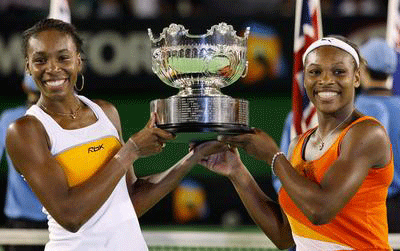Careers
Athletics traditionally has been limited to the male gender.
It was not until this past century that women were given even the slightest
opportunity to immerse themselves into the world of sports as careers or
professionally. While the opportunity to acquire jobs in the
field of athletics
as coaches, athletes or entrepreneur exists today, there are many limitations
that prevent females from becoming as successful and well known as males
in the same field.

Today professional sports is a dream for many and a reality
for very few. For women, the odds of living off of a sport related career
is less likely than it is for men as the support and opportunities are
far fewer. Professional leagues are inconsistently available for women. Coaching
positions are not given to women as often as they are for men, even after
Title IX was enforced.
Here is an excellent internet article by the Chronicle
of Higher Education with statistics proving just how few women hold coaching
positions at the Collegiate
level
and
that they have a much smaller salary then men.
Women’s Sports
Tennis
Women’s tennis is one of the more successful careers women can have when
it comes to sports. As women have increased their tennis skills to be much
closer to the level of men, their prize money has drastically increased
to the point where all the Grand Slam tournaments, with the exception of
Wimbledon, offer the same amount of prize money for men as they do for women.
Click here to
see an article about tennis salaries.
Golf
Golf has been one of the leading sports for women to excel in. The LPGA has a great deal of support and has existed as an organization since the 1970s. Salaries, however, are still much too low compared to what men make playing golf. In 2005 the highest paid golfer, Annika Sorentstem made $2,588,240.00 on the LPGA tour while the highest paid male golfer, Tiger Woods, made over 3 times that amount with $10,628,024 on the PGA tour.
Baseball
The highest paid male athletes often are baseball players. Many leagues have
attempted to form but none have been successful. The only reason women’s baseball was popular at any point was because during World War II, the All-American Girl’s Professional Baseball League (AAGBL), in the place of Major League baseball was the only way America could watch its beloved sport.
Volleyball
Women’s Professional Volleyball Association formed in 1986 as an organization for indoor volleyball leagues and beach volleyball leagues. This league unfortunately failed to exist after April 1998.
Soccer
Career opportunities for women in soccer are very small as semi-professional and professional leagues have formed and folded over the years. Despite soccer being the most popular youth sport in America for women and the recent media exposure and increase in popularity due to the debut of the Women’s World Cup in 1999, women can not live off of the income of a career playing soccer like men can.
Basketball
The WNBA formed in January of 1997 and is probably the most successful professional sport due to sponsorship. Other professional basketball leagues also exist in Italy, Germany, Spain and Brazil. The salaries of women in the WNBA are nowhere near the high paid athletes of the NBA. Shaquille O’Neil made 20 million dollars in his 2006 season as the number one paid athlete in the NBA. The 30th highest paid athlete in the NBA made $12, 344, 900 in the 2006 season more than one one hundredth the salary of the highest paid female basketball player who makes $90, 000.
Hockey
The NWHL formed as a women’s semi-professional league in 2000. The league is
full of future potential but for now the athletes remain unpaid and exists only
because each team seeks sponsors. For now, the NWHL is the highest level of hockey
women can play and many female hockey players who play international level hockey
use this league as a means of training when their home country teams are not
practicing.
Lacrosse
There are no professional leagues for field lacrosse therefore unless women can
play at the international level, there is no future for women playing lacrosse
once they finish University careers.